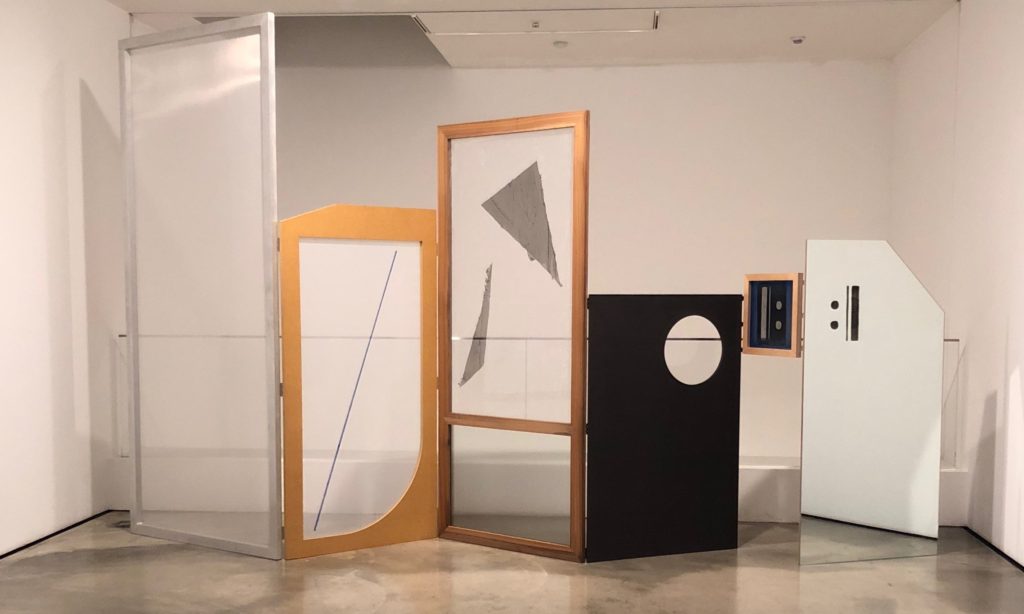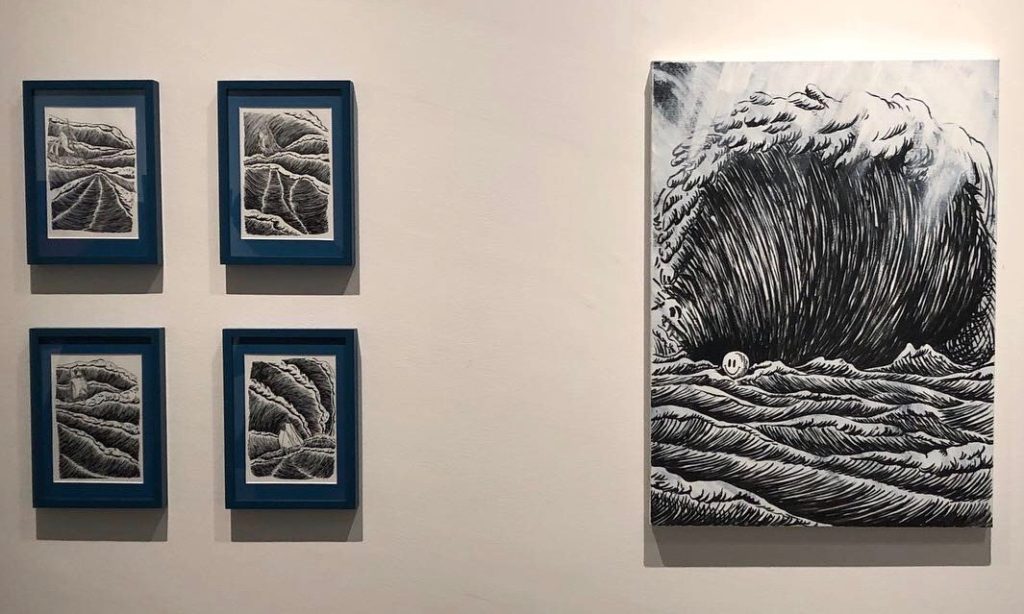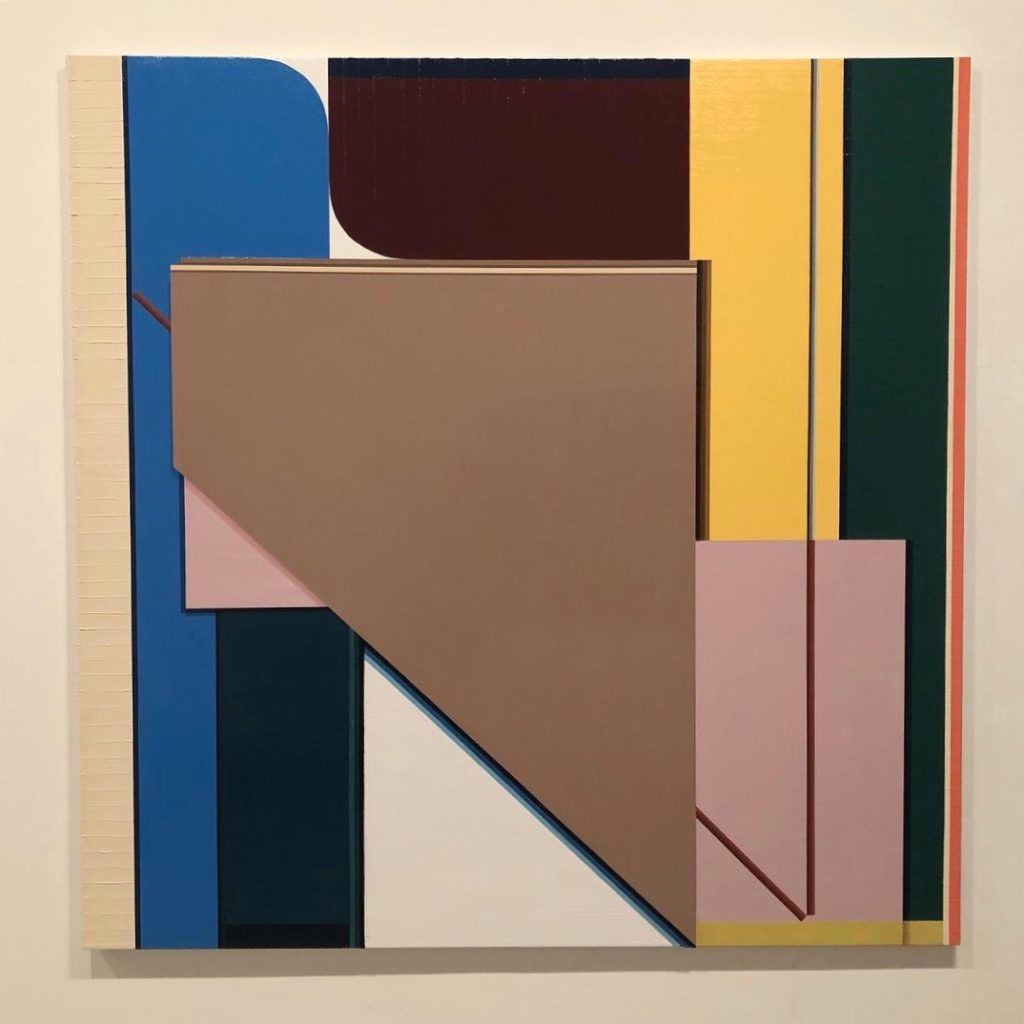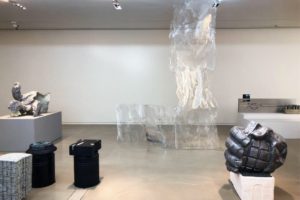Examining intention through the work of RohwaJeong, Hejum Bä, Jeongsu Woo, Eunsae Lee, and Heejoon Lee
Motif
Hakgojae Gallery Space 2, Seoul, KR
28 November – 30 December 2018
How does one question the existential motivations underpinning an artist’s practice? What is the use in doing so, except to initiate debate or incite controversy? The question “Why make Art?” (with a capital A) is of course impossible to answer—or at the very least, impractical to define—perhaps forming the basis for society’s objectification of ‘the artist’ as a trope rich in romanticized mystique.
A group exhibition of recent work by five young Korean artists at Hakgojae Gallery posits this question as its jumping-off point, yet simultaneously acknowledges its inevitably elusive outcome. In a lengthy catalogue essay, art critic NAM Woong parses this conundrum, resolving that in the absence of a viable answer “explanations supported by who, what, when, where, why, and how will be belabored” as mitigating suggestions (let’s ignore for the moment that the author has already addressed the ‘why’). In this essay, filed under the wonderfully self-deprecating title The Strollers (Flâneurs) that Break through the Bounds on the Ouroboros, Nam ventures that these more manageable micro-questions act as conduits to motifs which bypass any so-called ‘correct’ answer. “Countless explanations overfill the place of the answer’s absence,” writes Nam, pivoting to several follow-up questions meant to Socratically hone our attention on the fundamental issue.

Viewing the exhibition through this dialectical lens, the motifs that bring themselves to bear on the questioning mind are rather striking, though not altogether lacking in nuance. Artist duo RohwaJeong have a particularly strong presentation, restaging their sculptural installation Folding Screen (2018) which was previously exhibited at the Gwangju Biennale earlier this year but is much better-suited to Hakgojae’s less cavernous galleries. Dynamic and idiosyncratically constructed, it challenges the typology of the Asian folding screen, functional insofar as a way to organize space and provide privacy. Yet this work, as the others presented here by RohwaJeong, undermines any such consensus on classification and provokes further insight into sculpture’s role in the domestic (and gallery) space.

Tracing an identifiable motif is harder in the work of Hejum BÄ, whose abstractions are best characterized by their bold use of primary colors and enigmatic compositions. Bä’s brilliant conceit is her use of an often-oversaturated Crayola palette to render subtle visual forms over a destabilizing ground lacking in any discernible anchoring reference point, deploying a deceptively limited range of hues to produce a surprising sense of depth and movement. That each composition is wholly unique and yet achieves such uniform effect is testament to Bä/s mastery of her motif.

Jeongsu WOO and Eunsae LEE are somewhat more straightforward in their use of motif for their presentations in this exhibition. Woo’s evocative and lyrical paintings of wavelike forms and other non-planar surfaces bring a sense of levity to the show. His incorporation of consumer-grade clipart happy faces, however, are jolting within the context of otherwise quite aesthetically consistent works, and come across as an unnecessary crutch wielded as a mimesis-shattering anomaly. Lee’s figurative paintings capturing the female gaze are as sensuous in their use and application of color as they are direct and often confrontational in their engagement with the viewer. Though her motif is clear, its message is muddled and may lead viewers toward unfocused speculation rather than a clearer picture of the artist’s motivation.

Approaching what might be perceived as the most conventional motif in the exhibition are the geometric abstractions by Heejoon LEE. His systematic practice exploring a geometrical motif is best seen in his large canvases on the gallery’s ground floor, where the viewer can be totally absorbed in the picture plane. The paintings in Lee’s series A Shape of Taste (2018) are alluring in their refined yet tactile superficie and articulate composition. Indeed, by letting the motif assume primacy in his practice and exploring the range of possibilities within a narrow set of parameters, Lee’s works sublimate the artist’s subjectivity into a strict code of objective expression.
Circling back to the eponymous ‘Ouroboros’ in Nam’s essay, a close examination of an artist’s motif and the methodology governing their inquiry likely will not lead us to any answers. If anything, it shines light on our own rationale for this inquiry, allowing us to evaluate the intention behind such questioning. “The question that is impossible to have a complete answer neither has weight nor obligation,” Nam writes in response. Indeed, like a serpent with its tail in its mouth, continually devouring itself and being reborn from itself, such an undertaking inexorably yields only more questions, with no end in sight.
Andy St. Louis (2018.12.4)

